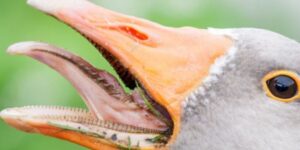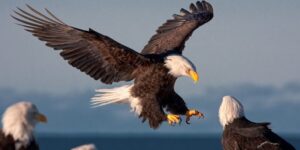Overview
All types of birds, from A to Z, demonstrate an amazing variety of species, each with distinct behaviors and adaptations. Birds range from tiny, delicate hummingbirds to large, powerful eagles, filling nearly every corner of the Earth. They inhabit forests, deserts, grasslands, and oceans, each species evolving specific traits that help them thrive in their environment. Some birds, like the Albatross, soar across vast oceans, while others, such as the Penguin, have adapted to cold, aquatic environments. Birds have incredible diversity in their feeding habits, from insect-eating robins to seed-loving finches. Their vibrant plumage, songs, and flight abilities captivate birdwatchers and researchers alike. Birds play essential roles in ecosystems, from pollination to pest control. Understanding the fascinating variety of birds highlights their importance in maintaining ecological balance. Each bird species, unique in its way, contributes to the planet’s biodiversity and the richness of life on Earth.
Introduction to All Types of Birds (A to Z)
All types of birds, from A to Z, showcase nature’s remarkable diversity. Over 10,000 species of birds inhabit every continent and ecosystem, from dense rainforests to open savannahs and icy polar regions. Birds have developed impressive adaptations that allow them to thrive in various environments. From the tiny hummingbird to the towering ostrich, each species demonstrates unique physical traits, behaviors, and survival strategies suited to their habitat. Their vibrant feathers, various flight styles, diverse beaks, and unique calls all contribute to their fascination and make them stand out in the animal kingdom.
Birds also perform essential roles in ecosystems. They help with pollination, seed dispersal, and pest control, maintaining balance in food chains. These crucial functions contribute to the health and sustainability of ecosystems. Whether soaring high in the sky, hunting for food, or migrating long distances, birds never fail to amaze with their skills and adaptability. In this article, we will explore a variety of bird species from A to Z, examining their fascinating characteristics, behaviors, and the ways they have evolved to thrive in their respective environments. By studying these incredible creatures, we gain deeper insight into the natural world and the importance of protecting birds and their habitats.
All Types of Birds (A to Z): A – Albatross
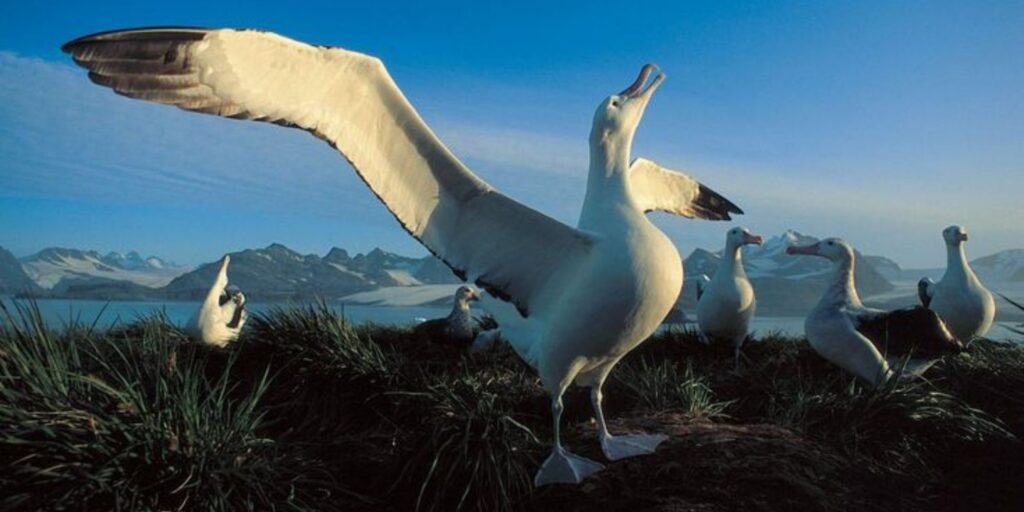
The Albatross stands as one of the largest flying birds, known for its remarkable wingspan, which can extend up to 12 feet. These magnificent seabirds mainly inhabit the Southern Ocean, where they spend much of their lives soaring over the waves. Their long, slender wings allow them to glide effortlessly across vast distances with minimal flapping. By riding air currents, they conserve energy, enabling them to travel across the world’s oceans. Albatrosses have exceptional stamina, and they can cover thousands of miles without resting on land. Some species can even fly non-stop for weeks at a time, covering enormous stretches of ocean without pause.
In addition to their impressive flight abilities, Albatrosses display extraordinary migratory patterns. They breed on isolated islands and return to the same breeding grounds year after year. These birds depend on remote, undisturbed environments to raise their young, typically laying a single egg. Once the chicks hatch, both parents collaborate to care for them, feeding them regurgitated food. Despite their vast range, Albatrosses face significant threats from human activity, particularly longline fishing, which poses a risk of accidental entanglement. Conservation efforts now focus on protecting these iconic birds and ensuring their survival, as their endurance and grace continue to captivate birdwatchers and nature enthusiasts worldwide.
All Types of Birds (A to Z): B – Bald Eagle
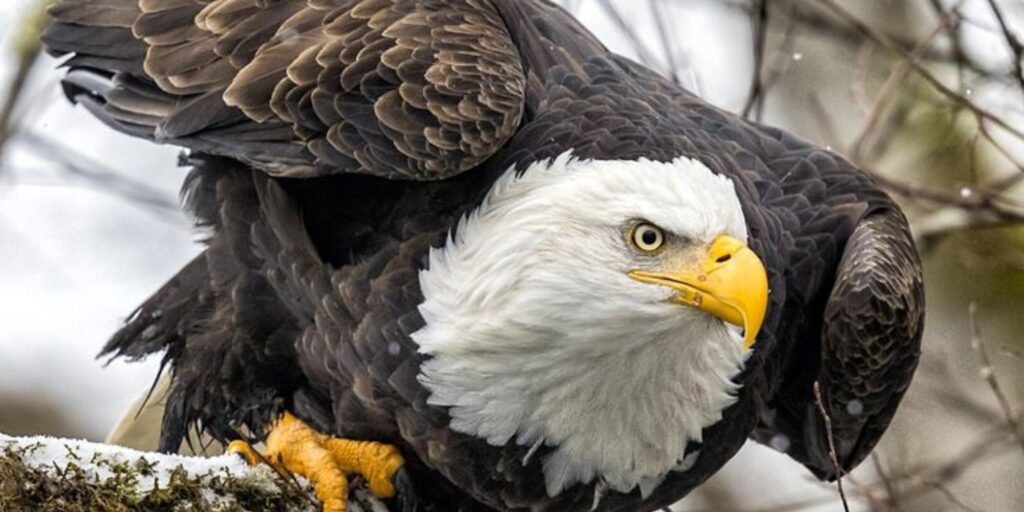
The Bald Eagle, a majestic bird of prey native to North America, easily captures attention with its striking white head, yellow beak, and dark brown body. This powerful raptor represents strength and freedom. As a top predator, the Bald Eagle primarily hunts fish, using its sharp talons to catch prey with remarkable precision and speed. The eagle can snatch fish directly from the water while in flight. Although fish dominate its diet, the Bald Eagle will also hunt small mammals and scavenge carrion when fish become scarce. This adaptability enables the Bald Eagle to thrive in various environments, ranging from coastal regions to inland lakes and rivers.
Bald Eagles prefer habitats near large bodies of water, where abundant food sources are available. They construct impressive nests in the tallest trees along waterways, providing a secure place to raise their young. These nests can grow to enormous sizes, with some reaching up to 10 feet in diameter. Once a pair of Bald Eagles establishes a nest, they typically return to it each year, adding more material to the structure. The Bald Eagle has become a symbol of resilience and power, particularly in the United States, where it represents the nation’s untamed spirit. Despite their impressive survival skills, Bald Eagles faced threats in the past. Ongoing conservation efforts now support their recovery, helping to ensure their continued presence in North America.
All Types of Birds (A to Z): C – Canary
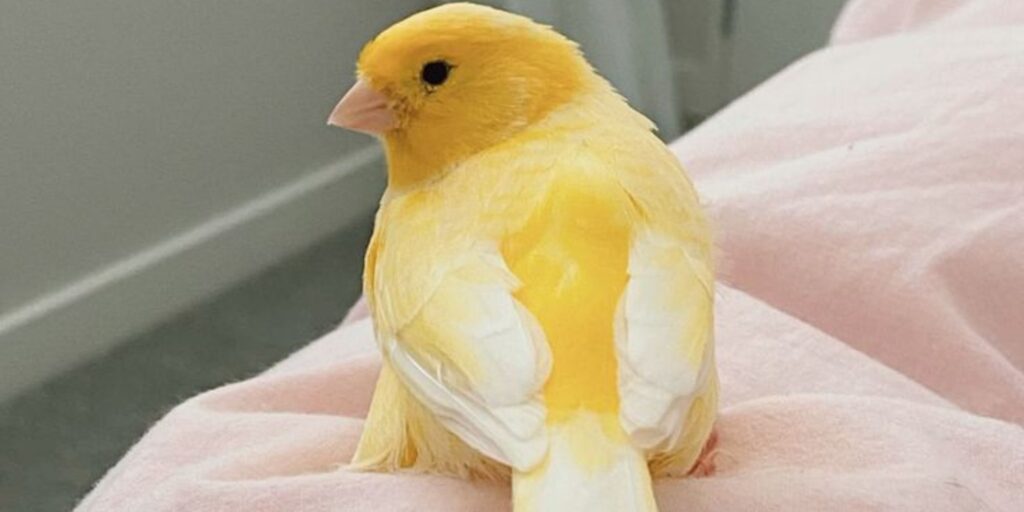
The Canary, a small and vibrant songbird, captivates with its cheerful, melodic singing. Native to the Canary Islands, these birds have long been valued for their beautiful vocalizations. Over time, Canaries have been selectively bred for their songs, resulting in a wide variety of colors, including bright yellow, orange, and red. Their bright plumage and tuneful songs make them popular pets around the world. In the wild, Canaries inhabit diverse environments such as forests and grasslands, where they primarily feed on seeds, small fruits, and plants. Males are particularly known for their ability to produce complex song patterns, using their songs to attract mates or establish territory.
Canaries have also played an important historical role, particularly in coal mines. Their sensitivity to toxic gases like carbon monoxide made them invaluable as early warning systems for miners. Although their role in mining has long ceased, the Canary’s association with environmental monitoring remains significant. In aviculture, Canaries’ adaptability to various living conditions and their pleasant songs continue to make them one of the most beloved and widely kept birds. As songbirds, Canaries showcases the complex relationship between nature and domestication, highlighting how human selection has shaped both their appearance and behavior over time.
All Types of Birds (A to Z): D – Dove
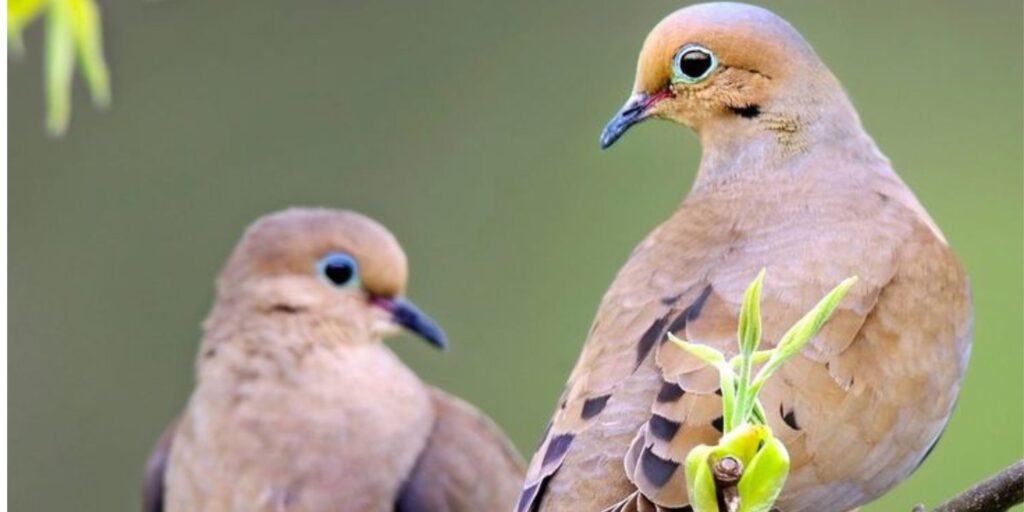
Doves are graceful and gentle birds, often linked with symbols of peace, love, and hope. Belonging to the Columbidae family, which also includes pigeons, doves are generally small to medium-sized birds recognized for their smooth, gliding flight and soft, cooing calls. These birds have adapted to a wide range of environments, thriving in forests, gardens, and urban areas. Their diet consists primarily of seeds, fruits, and grains, which they forage on the ground or in shrubs. Doves are well-suited to living in both natural and human-altered habitats, thanks to their ability to find food easily and nest in various locations.
Doves are also known for their strong monogamous bonds. They typically form lifelong pairs, where both males and females share responsibilities for nesting and raising their young. Their nests are simple, often constructed in the branches of trees or, in some cases, on the ground. The symbolism of doves extends beyond their gentle nature; they represent hope, peace, and reconciliation in many cultures around the world. Throughout history, doves have been used in religious and cultural ceremonies, often symbolizing the spirit of peace and unity. With their calming presence and symbolic meanings, doves continue to be one of the most beloved and admired bird species.
All Types of Birds (A to Z): E – Eagle
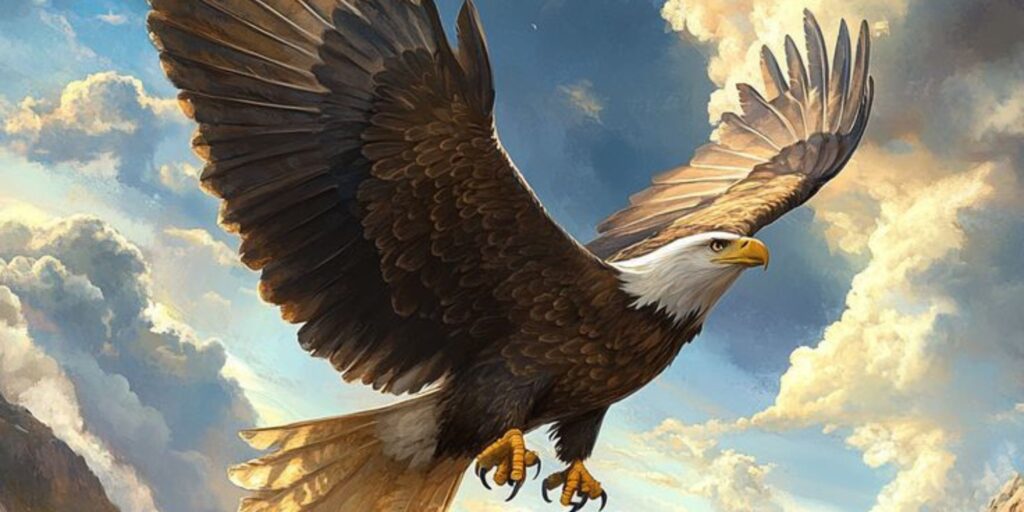
Eagles are formidable birds of prey, widely known for their sharp hunting skills and extraordinary vision. These majestic birds have large, powerful bodies that help them dominate the skies and capture prey efficiently. Their keen eyesight, one of the sharpest in the animal kingdom, allows them to spot potential food from miles away. Eagles have strong, muscular bodies and powerful talons, which they use to capture fish, mammals, and other birds. They are often found near large bodies of water, such as lakes, rivers, and coastal regions, where they can hunt for fish and other prey. Among the most famous eagle species are the Bald Eagle and Golden Eagle, both revered for their majestic presence and impressive abilities.
In addition to their hunting prowess, eagles are exceptional fliers, capable of soaring at great heights while scanning the ground below for food. Their large wingspans enable them to glide effortlessly on air currents, conserving energy during long flights. Eagles’ regal appearance and impressive hunting skills have made them symbols of strength, power, and freedom. Their presence in many cultures, such as the Bald Eagle in the United States, further emphasizes their significance. With their unparalleled hunting ability and awe-inspiring flight, eagles continue to stand as one of the most iconic and respected birds of prey in the world.
All Types of Birds (A to Z): F – Falcon
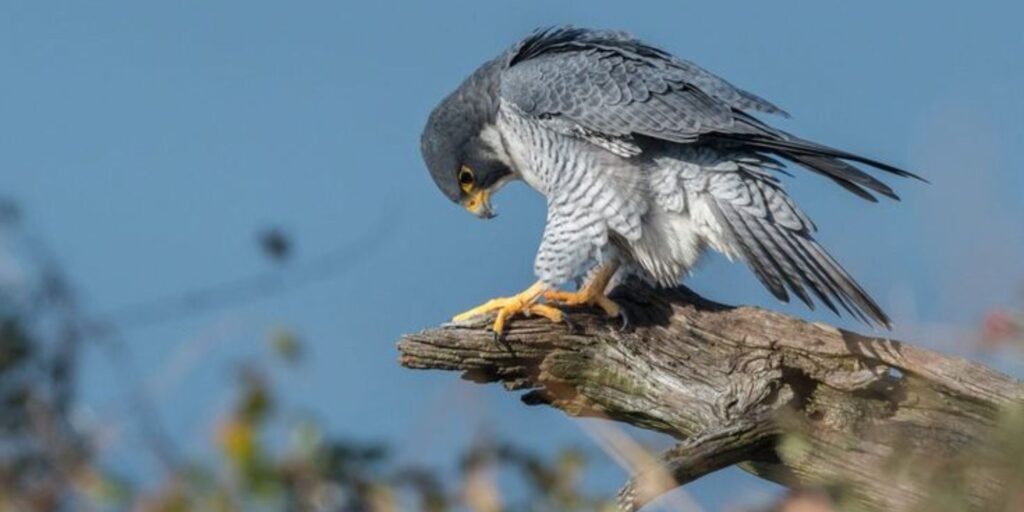
Falcons are renowned for their incredible speed and agility, making them some of the fastest birds on the planet. During their hunting dive, known as the stoop, they can reach speeds exceeding 200 miles per hour, allowing them to swoop down on prey with unparalleled precision. Equipped with sharp talons and hooked beaks, falcons are well-designed for capturing and killing prey mid-flight. These birds of prey are skilled hunters, capable of capturing a wide range of animals, from small birds and rodents to insects. Falcons’ sharp eyesight also plays a crucial role in their hunting, enabling them to spot potential prey from great distances while soaring high above the ground.
Falcons often nest in high places, such as cliffs or tall man-made structures, where they have an unobstructed view of their surroundings. This allows them to survey large areas for any signs of prey. Among the many species of falcons, the Peregrine Falcon stands out as the most famous due to its exceptional speed and hunting efficiency. It has earned a reputation as one of nature’s most efficient predators. Falcons’ agility, speed, and precision make them not only extraordinary hunters but also symbols of power and precision in the bird world.
All Types of Birds (A to Z): G – Goose
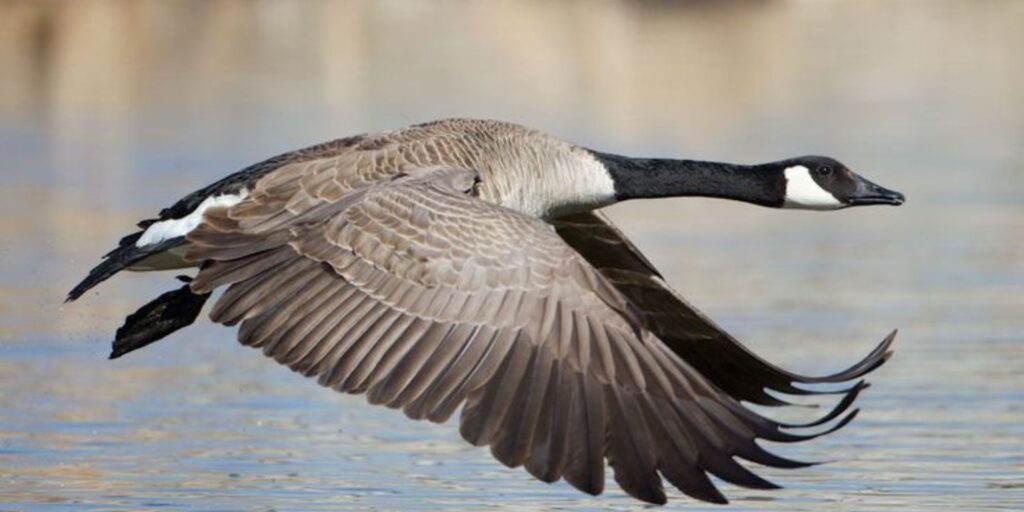
Geese are large, social waterfowl famous for their distinctive honking calls and impressive migratory patterns. These birds undertake long migrations, often covering thousands of miles between their breeding and wintering grounds. During migration, geese fly in V-shaped formations, a strategy that helps conserve energy. The lead bird creates an updraft that benefits the rest of the flock, allowing them to fly more efficiently. This coordinated movement highlights the geese’s remarkable ability to navigate vast distances, relying on instinct and environmental cues to guide their journey. The V-shaped formation also strengthens the bond within the flock, as each bird takes turns leading, ensuring everyone gets the energy benefits.
Geese primarily feed on grasses, grains, and other vegetation found in wetland areas like lakes, rivers, and marshes. These birds are herbivores and thrive in habitats where they can easily access their preferred food sources. Geese are highly social animals, often seen in large flocks, especially during migration periods. Within these flocks, geese form strong family bonds and cooperate in finding food and protecting one another from predators. Their teamwork and adaptability during seasonal changes ensure their survival. Geese serve as an example of how social structures and collective effort contribute to a species’ ability to thrive in changing environments, making them a fascinating and resilient part of the bird world.
All Types of Birds (A to Z): H – Hummingbird
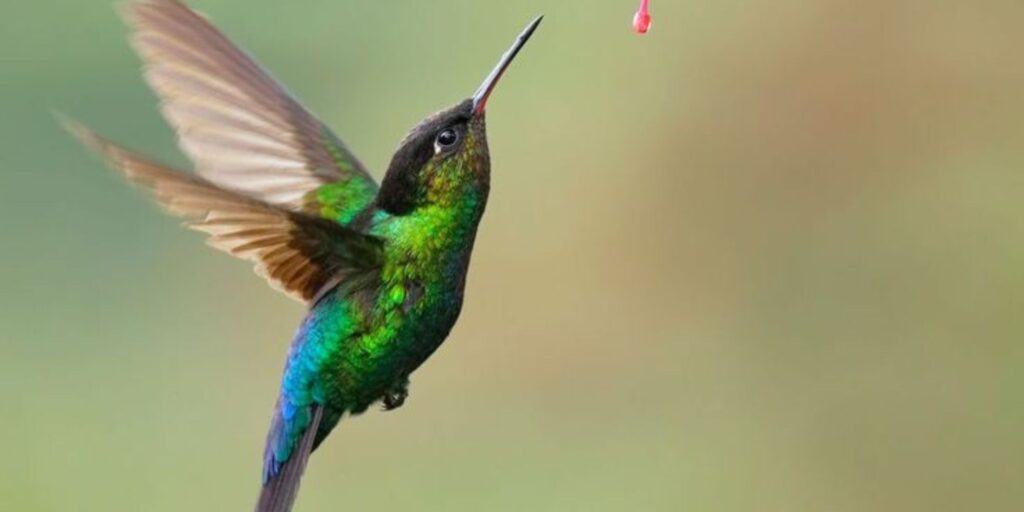
Hummingbirds are tiny, vibrant birds renowned for their extraordinary flying abilities. These remarkable creatures can hover in mid-air by rapidly flapping their wings, which beat up to 80 times per second. This unique flight style allows them to remain stationary while feeding on nectar from flowers. Hummingbirds can also fly backward, a skill few birds possess, which adds to their agility. Their rapid wing beats are fueled by a high metabolism, enabling them to perform intricate aerial maneuvers with ease. Capable of moving in all directions, hummingbirds rank among the most skilled flyers in the animal kingdom.
Hummingbirds play a crucial role as pollinators. While feeding on nectar, they transfer pollen from one flower to another, aiding the reproductive process of plants. These birds primarily inhabit the Americas, with many species living in tropical and subtropical regions. Due to their high energy demands, hummingbirds consume large quantities of nectar and small insects to sustain their active lifestyles. Their small size, vivid colors, and dynamic flight make them one of the most captivating birds to observe. Additionally, their importance in ecosystems highlights their unique place in the avian world, as they contribute significantly to plant reproduction and overall biodiversity.
All Types of Birds (A to Z): I – Ibis
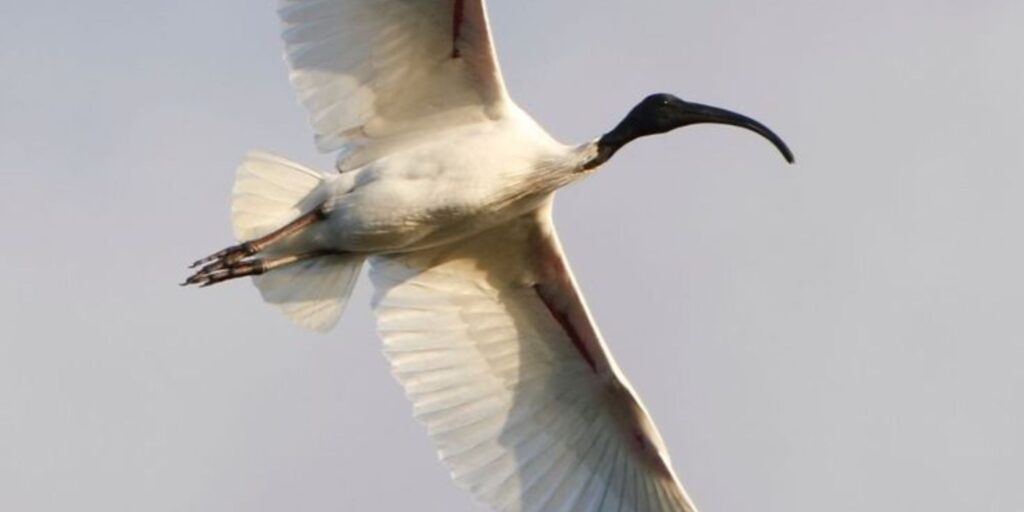
The Ibis is a distinctive wading bird recognized for its long, curved beak, which it uses to probe mud in search of food. These birds commonly inhabit wetlands, marshes, and estuaries, where they feed on small invertebrates, fish, and amphibians. The unique shape of the Ibis’s beak allows it to reach deep into the mud, accessing food sources that other birds cannot. As highly skilled foragers, Ibises sift through water and soil using their beaks to uncover hidden prey. They adapt well to various habitats, including both freshwater and saltwater environments, depending on the species and their specific needs.
Ibises are also known for their striking plumage. The Scarlet Ibis, for example, features vibrant red feathers, making it particularly eye-catching. These birds are highly social, often gathering in large flocks during migration or feeding times. Ibises demonstrate cooperative behavior, working together to find food and navigate their environments. Their graceful flight patterns and unique beaks make them easily recognizable in the wild. Whether wading through wetlands or soaring in formation, Ibises contribute significantly to their ecosystems. They help maintain balance in their habitats, playing a vital role in the food chain and the overall health of the environment.
All Types of Birds (A to Z): J – Jay
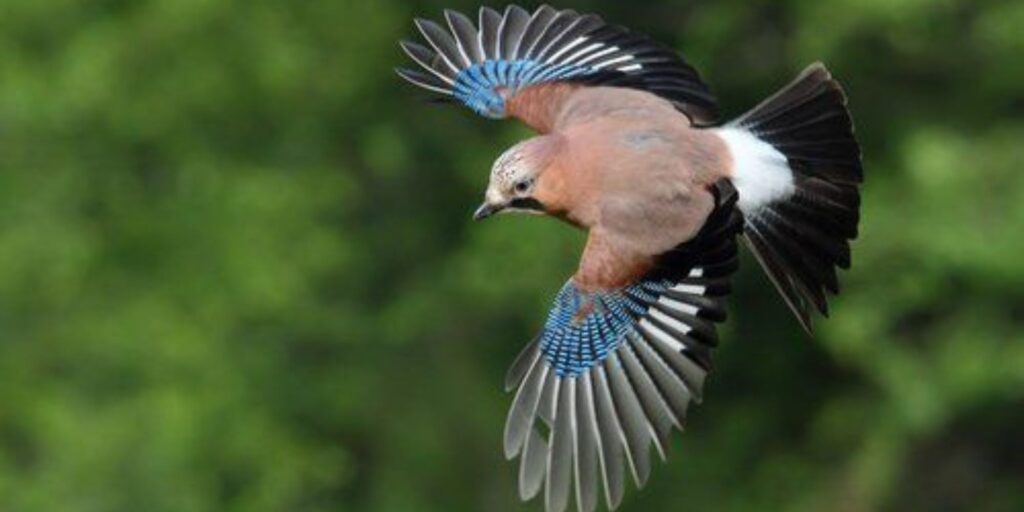
Jays are intelligent and vibrant birds that belong to the crow family. Known for their striking appearance and complex behaviors, they exhibit a wide range of vocalizations. Some species of Jays can mimic sounds from other animals and environmental noises, using this ability to communicate with other birds and even confuse potential predators. Jays are also highly skilled at food storage, particularly acorns, which they hide in multiple locations. This behavior ensures a steady supply of food during the winter months when resources become scarce. With their impressive memory, Jays can remember where they stored their food and retrieve it when needed.
In addition to their vocal talents and food-hoarding habits, Jays are known for their territorial nature. They become quite aggressive when defending their nests or feeding areas, especially during breeding seasons. These birds thrive in various habitats, from dense forests to suburban gardens. Their bright, colorful plumage, featuring shades of blue, purple, and white, makes them a favorite among birdwatchers. Jays not only contribute to their ecosystems by dispersing seeds but also play a key role in forest regeneration. As adaptable and resourceful birds, they help maintain the balance of their habitats, showcasing their importance in the natural world.
All Types of Birds (A to Z): K – Kestrel
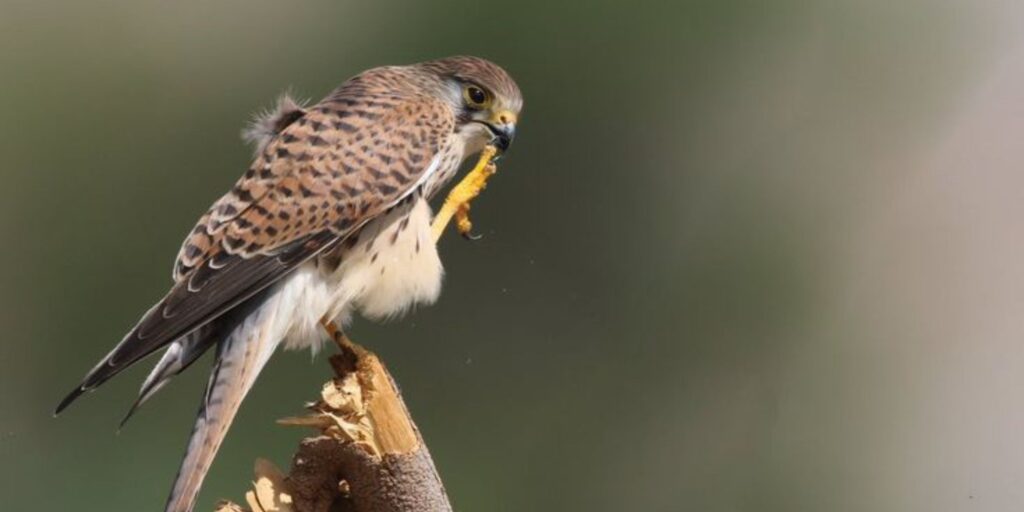
The Kestrel is a small but powerful falcon known for its remarkable hovering flight and sharp hunting skills. These birds often hover in mid-air, using their excellent vision to scan the ground for prey. Their keen eyesight allows them to detect small mammals, insects, and other potential food from great distances. Once they spot their prey, Kestrels swoop down with impressive speed and precision to capture it. This unique hunting technique, combined with their agility in flight, makes them highly effective predators. Kestrels primarily feed on rodents, insects, and small birds, demonstrating their adaptability as hunters in various environments.
Kestrels can thrive in a wide range of habitats, from open fields and grasslands to urban areas. Their ability to adapt to different environments has contributed to their widespread presence across many regions. These birds’ distinctive flight patterns and colorful plumage, often with streaks of red, brown, and black, make them easy to identify. Kestrels have earned popularity among birdwatchers and falconry enthusiasts due to their skillful hunting techniques and graceful flight. With their efficient hunting methods and their capacity to thrive in diverse habitats, Kestrels remain an iconic and admired species in the world of birds of prey.
All Types of Birds (A to Z): L – Lark
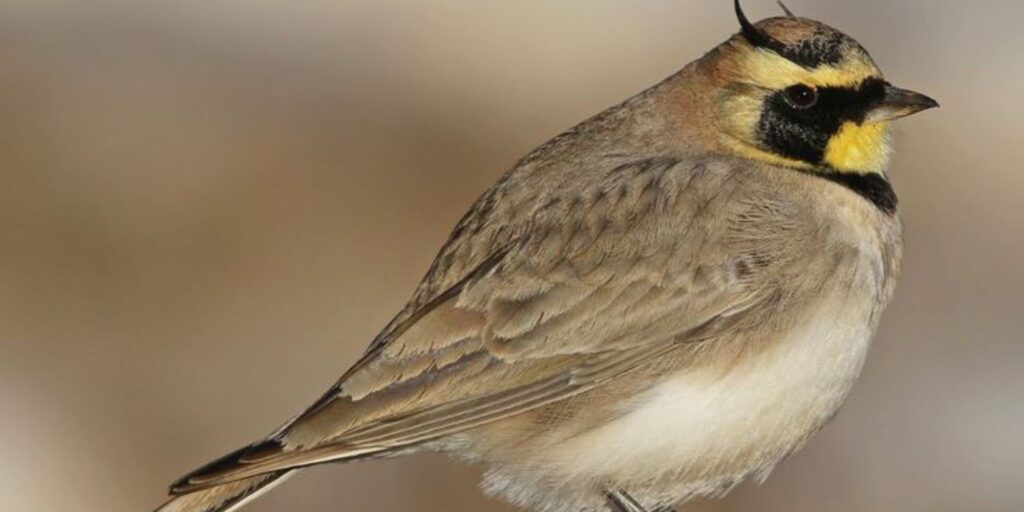
Larks are small, ground-dwelling birds known for their melodious songs and lively personalities. They inhabit open grasslands, fields, and meadows, where they feed mainly on seeds and insects. These birds are highly territorial, particularly during the breeding season, when they engage in vocal displays to defend their space from rivals. Larks often sing from high perches, producing complex and varied songs that can travel over long distances. Their songs act as territorial markers and attract mates, making them an essential part of their ecosystems. The cheerful melodies of larks are often linked to the beauty of the landscapes they inhabit, enhancing the natural atmosphere.
The Skylark, one of the most famous species of larks, stands out for its beautiful song and impressive display of flight. This bird’s spiraling flight pattern, paired with its song, offers a captivating spectacle for those lucky enough to witness it. Larks’ songs vary from simple chirps to intricate melodies, captivating birdwatchers and nature lovers alike. Beyond their songs, larks contribute to ecosystem balance by controlling insect populations and dispersing seeds. Their ability to adapt to open environments, combined with their iconic songs, ensures that larks remain beloved by many.
All Types of Birds (A to Z): M – Macaw
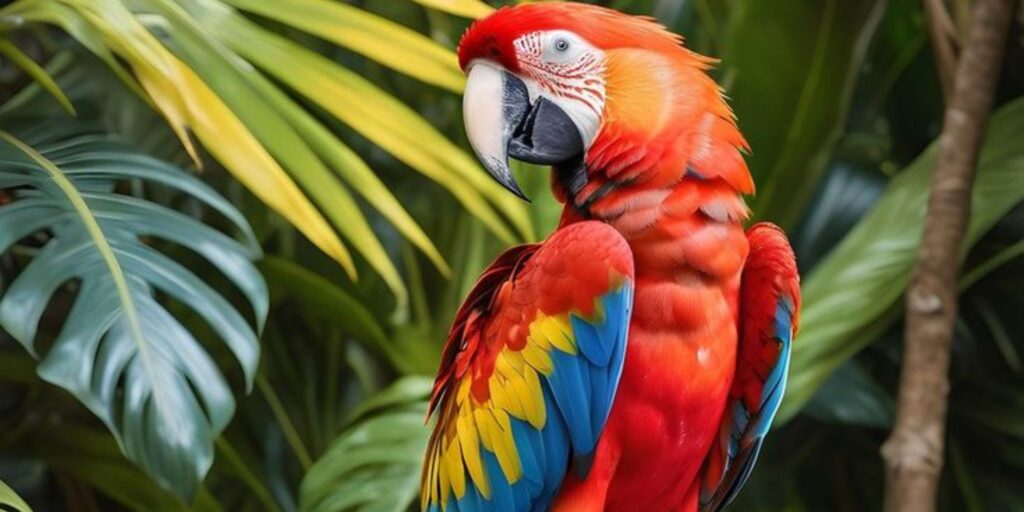
Macaws are large, vividly colored parrots native to the tropical regions of Central and South America. These stunning birds boast a range of vibrant plumage, with colors like deep blues, greens, reds, and yellows that make them unmistakable in their habitats. Their striking feathers are complemented by a strong, curved beak that helps them crack open nuts, seeds, and fruits. Known for their exceptional intelligence, macaws can mimic human speech and a variety of sounds, making them highly interactive pets. In the wild, they are typically found in the dense canopies of tropical rainforests, where they thrive on a diet of fruits, nuts, and seeds. Macaws use their strong beaks to forage and manipulate objects, showcasing their remarkable cognitive abilities.
Macaws are also highly social birds, often living in large, noisy flocks that offer protection and companionship. They form strong family bonds, with parents and offspring staying together, providing mutual care and support. These birds are known for their playful behavior, frequently engaging in activities that strengthen social connections within the flock. Their lively interactions and ability to communicate through vocalizations make them fascinating to observe. Due to their captivating appearance, intelligence, and engaging personalities, macaws have become one of the most popular exotic birds worldwide, admired for their beauty and ability to form meaningful relationships with their human caregivers.
All Types of Birds (A to Z): N – Nighthawk
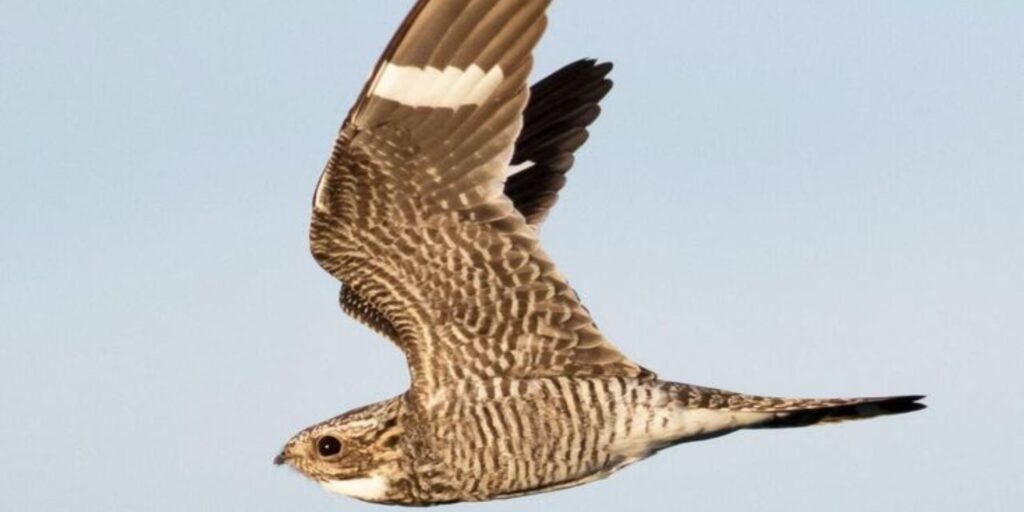
The Nighthawk is a nocturnal bird known for its unique hunting techniques and eerie, booming calls. Active during dusk and dawn, these birds fly through the air to hunt for insects, relying on their excellent aerial maneuverability to catch prey mid-flight. Their wide, pointed wings allow them to navigate swiftly through the sky, making sudden turns and dives to capture insects like moths and beetles. Nighthawks feed on a variety of insects, often swarming in the sky, and their hunting strategy allows them to cover vast areas in search of food. Their ability to fly silently adds to their effectiveness as hunters.
Nighthawks typically nest on the ground, where their camouflage allows them to blend seamlessly into their environment, making them difficult to spot during daylight hours. Their mottled plumage provides excellent concealment, helping them stay safe from predators. One of the most distinctive features of the Nighthawk is its booming, nasal call, which echoes through the night as the bird hunts. This vocalization serves to establish territory and communicate with other Nighthawks. These birds, though elusive and challenging to spot, play a vital role in controlling insect populations, making them an important part of the ecosystem.
All Types of Birds (A to Z): O – Ostrich
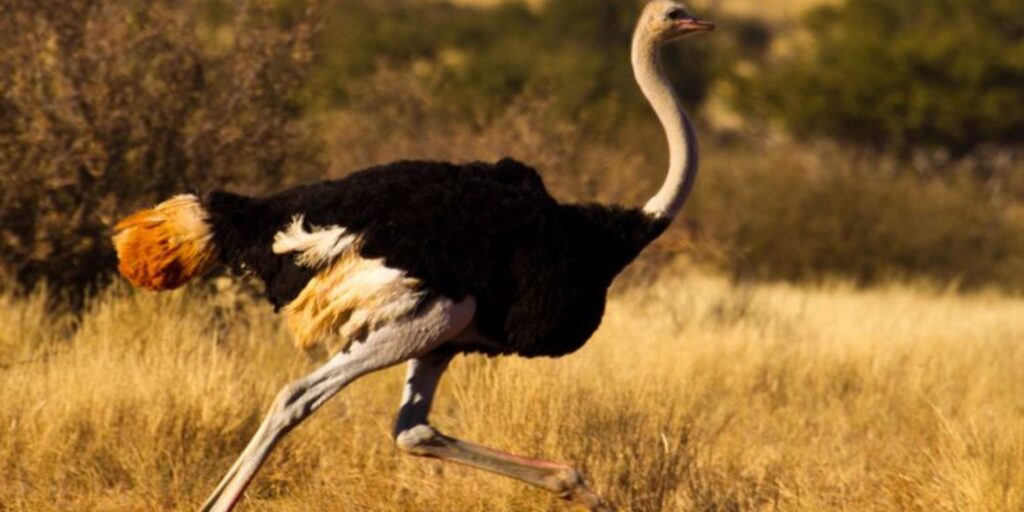
The Ostrich is the world’s largest and one of the fastest birds, capable of reaching speeds up to 60 miles per hour. Native to the African continent, Ostriches are flightless but have evolved powerful, muscular legs that allow them to outrun most predators. Their long legs help them cover vast distances in search of food, while their strong, sturdy bodies are well-suited to the open landscapes of the African savannas. With their distinctive long necks, large bodies, and large eyes, Ostriches stand out in their environment. These unique adaptations allow them to thrive in areas where other birds might struggle.
Ostriches primarily feed on plants, seeds, and small insects, using their keen eyesight to spot food from a distance. Though they can go without water for long periods, they remain well-hydrated by consuming moisture from the plants they eat. Despite their size and seemingly cumbersome appearance, Ostriches are perfectly adapted to life in the African savannas, where they often face extreme temperatures and scarce resources. Their remarkable ability to run at such high speeds and their ability to endure tough environmental conditions make them one of nature’s most impressive and resilient birds.
P – Penguin

Penguins are flightless birds uniquely adapted to life in cold, aquatic environments. Native to the Southern Hemisphere, especially Antarctica, penguins have black-and-white plumage that resembles a tuxedo, making them easily recognizable. Unlike most birds, penguins have flipper-like wings designed for underwater propulsion, functioning like paddles to help them “fly” beneath the surface. Their streamlined bodies and powerful flippers make them exceptional swimmers, capable of reaching impressive speeds while hunting for fish, krill, and other marine life. Penguins rely on their agility to catch prey, often diving deep into the ocean to find food, showcasing their mastery of the aquatic world.
Penguins are highly social birds that form large colonies to breed and raise their young. These colonies protect from predators such as seals and orcas. During the breeding season, penguins gather in vast numbers, mate, and take turns incubating their eggs and caring for their chicks. Despite the extreme environments in which they live, penguins thrive by relying on their strong social bonds and remarkable swimming abilities. Their unique adaptations to cold climates, combined with their cooperative behaviors, make penguins one of the most fascinating and beloved bird species worldwide.
Q – Quail
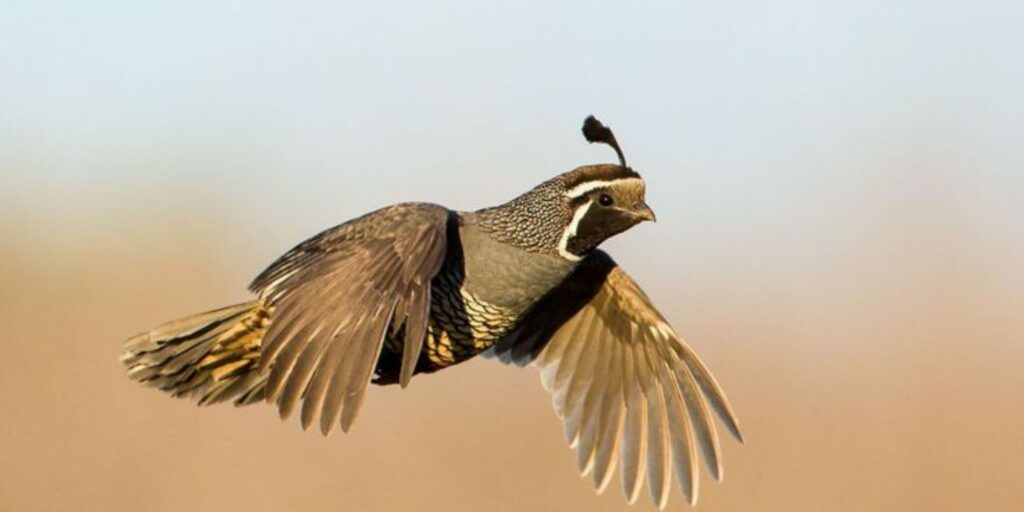
Quails are small, ground-dwelling birds known for their plump bodies and short, rounded wings. These birds thrive in a variety of habitats, including grasslands, scrublands, and forests, where they forage for seeds, insects, and small plants. Quails are excellent runners, relying on their speed to evade predators. When threatened, they can suddenly take flight in a burst of motion, swiftly escaping danger. Their ability to dart through the underbrush and take off quickly helps them evade numerous predators in their environment.
Quails build their nests on the ground, often in dense vegetation, where they lay eggs that blend seamlessly with their surroundings. This camouflage helps protect the eggs from predators that might otherwise easily spot them. The bobwhite quail, a well-known species in North America, is particularly recognized for its distinctive, whistling call, which gives the bird its name. This call, along with their small size and secretive nature, makes quails a fascinating species to observe in their natural habitats. Despite their small size, quails play an important role in their ecosystems, helping to control insect populations and spread seeds.
R – Robin
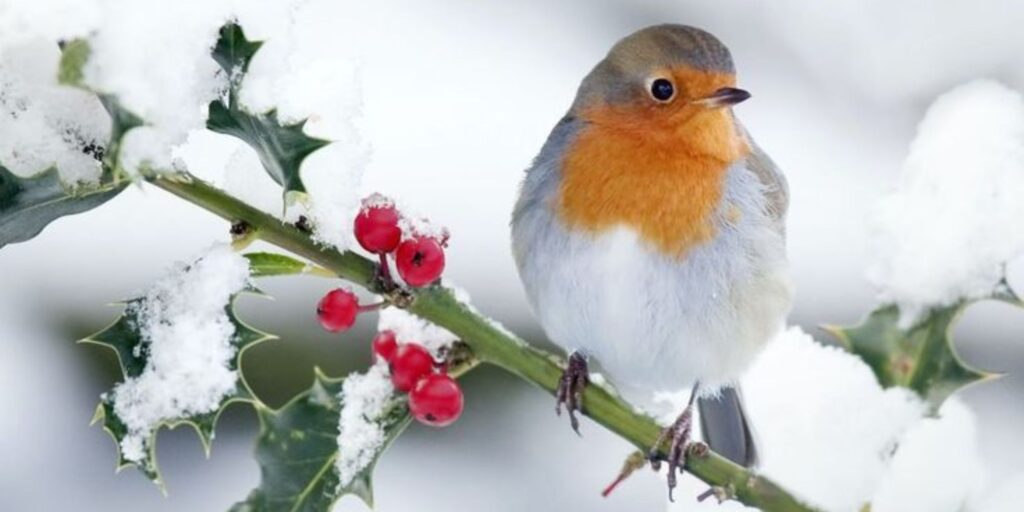
The Robin is a small, vibrant songbird easily recognized by its red breast and cheerful songs. Often associated with the arrival of spring, robins symbolize renewal and the return of warmer weather. These birds thrive in gardens, parks, and woodlands, where they add a splash of color to the landscape. As insectivores, robins feed on a wide variety of small invertebrates, including worms, beetles, and caterpillars. They hunt for food by hopping along the ground, using their sharp eyesight to spot prey hidden beneath the soil or leaves. This keen hunting strategy helps robins maintain a steady supply of food throughout the year.
Robins are migratory birds, traveling south to warmer regions during the winter months and returning in the spring to breed. Their melodious songs, heard in the early morning, signal the return of daylight and the start of a new season. Robins’ songs, marked by clear, bright notes, have made them one of the most beloved songbirds. As one of the first birds to appear at dawn, robins serve as a symbol of the changing seasons. Their presence offers a reminder of nature’s cycles and the promise of growth and renewal that each new season brings.
S – Swan
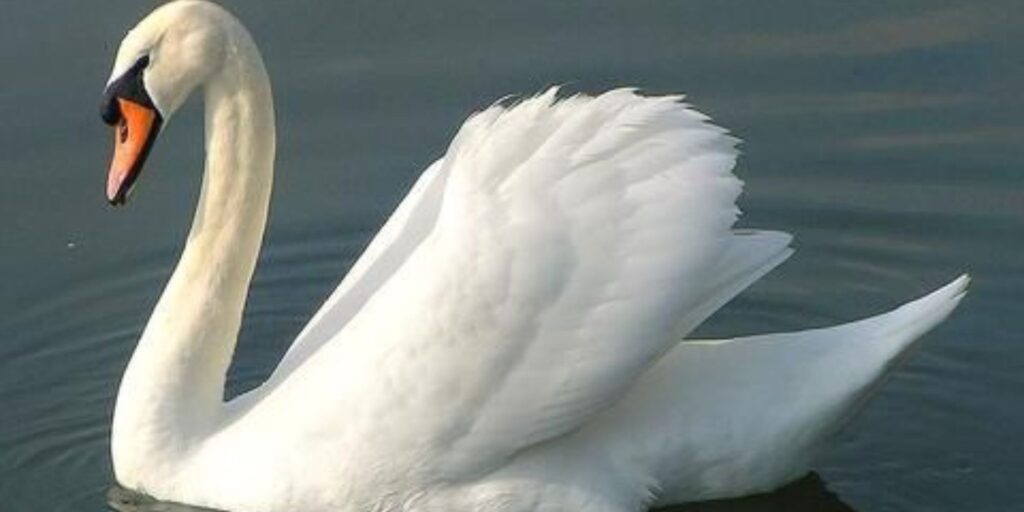
Swans are large, elegant waterfowl known for their striking beauty and graceful movements. With their long, curved necks and pristine white feathers, they glide effortlessly across lakes, rivers, and ponds. Swans are primarily herbivores, feeding on aquatic plants, algae, and grasses. Their strong, webbed feet make them excellent swimmers, allowing them to access submerged vegetation with ease. Swans often live in calm, shallow waters where they can forage and build their nests. Their graceful presence and smooth, gliding flight have made them symbols of beauty and tranquility in many cultures.
Swans are highly social and often form lifelong monogamous pairs. These pairs work together to build nests and care for their young. During the breeding season, swans defend their territories fiercely, protecting their nests and feeding areas from potential threats. The Mute Swan, famous for its pure white feathers and peaceful demeanor, is one of the most well-known species of swan. However, other species, such as the Trumpeter Swan, are recognized for their distinctive calls, which echo across lakes and wetlands. Swans’ striking appearance and strong family bonds make them one of the most admired bird species in the world.
T – Toucan
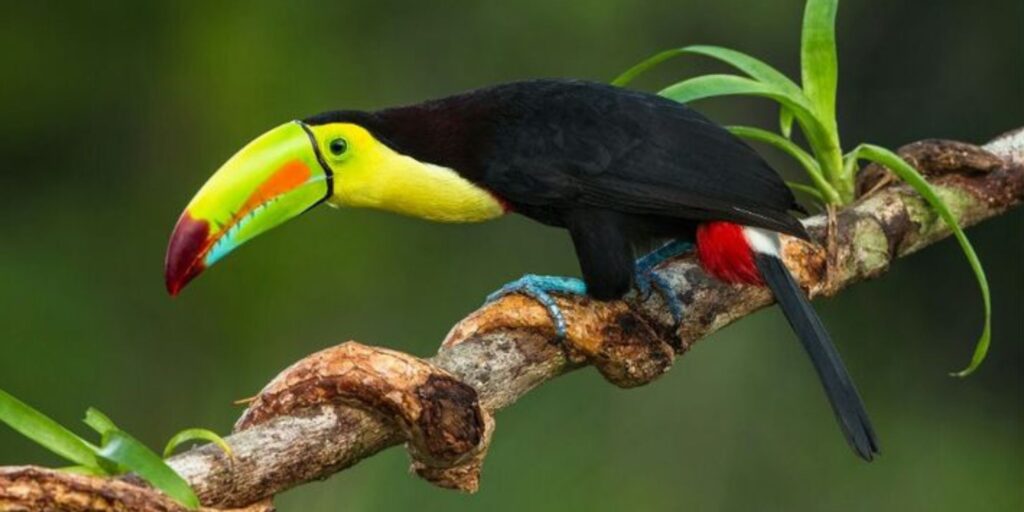
Toucans are large, brightly colored birds known for their oversized, vibrant beaks. Native to the tropical rainforests of Central and South America, toucans thrive in dense, lush environments. They feed on a variety of fruits, nuts, seeds, and insects, using their powerful beaks to access food high in the trees. Though their beaks appear heavy, they are surprisingly light due to a hollow structure that helps toucans maintain balance. Their colorful plumage and unique beaks make them one of the most striking birds in the rainforest, capturing the attention of anyone who crosses their path.
Toucans are highly social, often found in small flocks as they forage and interact with one another. Their bright feathers and exaggerated beaks play important roles in courtship displays and communication. Toucans use their large beaks to produce a variety of vocal sounds and establish social hierarchies within their groups. Their social bonds and eye-catching appearance make them an iconic species of the rainforest. In addition, toucans contribute to their ecosystem by dispersing seeds, helping the growth of many tree species within their habitat.
U – Upland Sandpiper
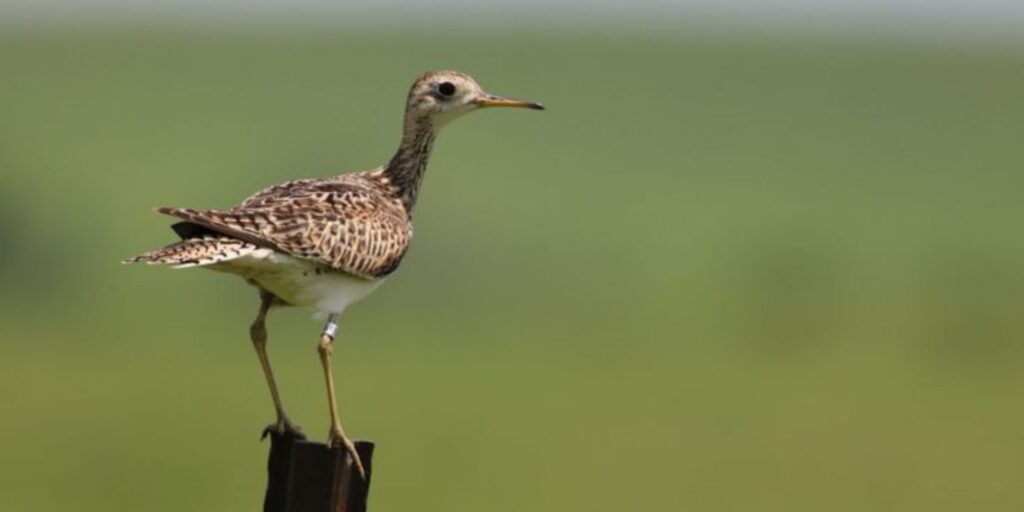
The Upland Sandpiper is a migratory shorebird that prefers open grasslands, prairies, and agricultural fields. Unlike many shorebirds that prefer coastal areas, Upland Sandpipers are typically found inland, where they forage for insects, seeds, and small invertebrates. These birds have long, slender legs, which help them move through tall grasses and open fields. Their unique, flute-like calls often fill the air during the breeding season. This species adapts to a variety of environments, making it a versatile presence across North America.
Upland Sandpipers nest on the ground, building simple nests hidden in grass or soil. As ground feeders, they use their sharp vision and long legs to walk and probe the earth for food. During migration, Upland Sandpipers cover vast distances, traveling across continents to reach their wintering grounds. They often cross the Gulf of Mexico, a challenging journey that showcases their remarkable endurance. Their resilience in both breeding and migratory behaviors makes Upland Sandpipers a fascinating species to observe.
V – Vulture
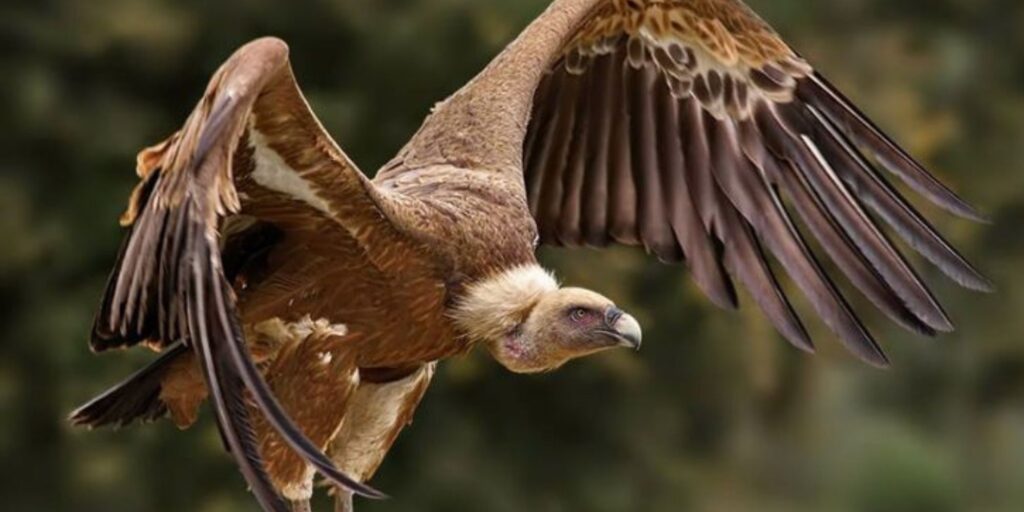
Vultures are large, scavenging birds with distinct bald heads and powerful beaks designed for consuming carrion. They play a crucial role in maintaining ecosystem health by cleaning up dead animals, thus preventing disease spread. With their keen eyesight, vultures can spot carcasses from high above, allowing them to locate food over vast distances. Upon finding a potential meal, their powerful beaks and sharp talons tear through tough hides to access nutrient-rich meat. Vultures have evolved specialized digestive systems that process bacteria-laden meat without harm, making them essential to natural waste disposal.
Vultures fall into two primary groups: Old World vultures, found in Africa and Asia, and New World vultures, inhabiting the Americas. Despite their often unappealing appearance, vultures significantly contribute to ecological balance. Their scavenging habits prevent the buildup of dead animals in the wild, which could lead to disease spread and food chain disruption. The efficiency of vultures in cleaning up carcasses makes them an integral part of the environment, ensuring that ecosystems stay healthy and free from potential hazards caused by decaying bodies.
W – Woodpecker
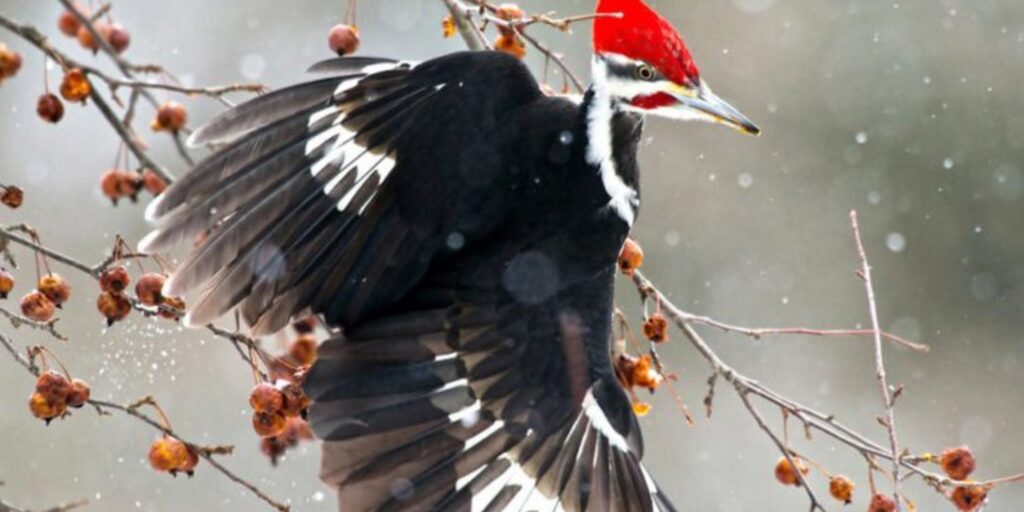
Woodpeckers stand out for their strong, pointed beaks and distinctive drumming behavior. They use their beaks to drum on tree trunks for multiple reasons. Drumming helps them find insects hidden in bark, create nesting cavities, and communicate with other woodpeckers, especially during the breeding season. With specialized feet, woodpeckers excel at climbing trees and gripping trunks securely. This skill allows them to forage effectively in forested habitats.
Woodpeckers feed primarily on insects like ants, beetles, and wood-boring larvae. Their long, sticky tongues help them reach deep within the bark to extract prey. Woodpeckers also have reinforced skulls to absorb the force of continuous pecking. This adaptation enables them to drum at high speeds without harm. Species such as the Northern Flicker and Pileated Woodpecker showcase unique behaviors and calls. Woodpeckers not only forage but also create habitats for other animals by excavating nesting sites in trees.
X – Xantus’s Hummingbird
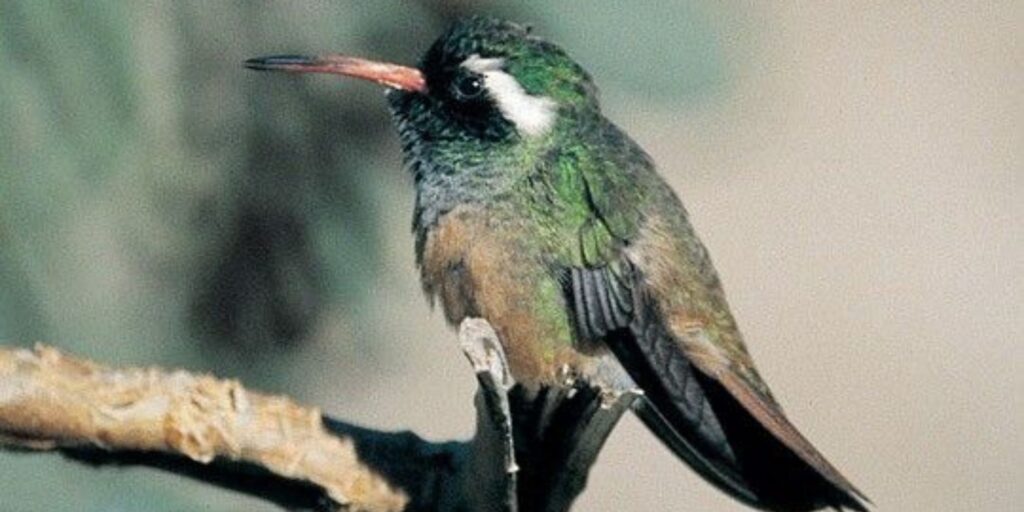
Xantus’s Hummingbird stands out as a small but striking bird native to the southwestern regions of Mexico. With its vivid green and blue plumage, this species creates a noticeable presence in its habitat. Like other hummingbirds, Xantus’s Hummingbird can hover in place by rapidly beating its wings, allowing it to feed on nectar from flowers. The bird’s diet mainly consists of nectar, though it also captures small insects for protein. Xantus’s Hummingbird uses its agility and speed to dart between flowers, providing the energy needed to fuel its high metabolism.
Xantus’s Hummingbird defends its feeding areas with strong territorial behaviors. It aggressively chases off other birds that try to invade its space. Despite its small size, the bird fiercely protects its food sources, ensuring it receives the energy required for survival. The striking appearance and territorial nature of the Xantus’s Hummingbird make it an intriguing sight in its natural habitat. These hummingbirds play an essential role in pollination, transferring pollen as they feed. Their bright feathers and energetic behavior add a colorful touch to Mexico’s diverse ecosystems.
Y – Yellow Warbler
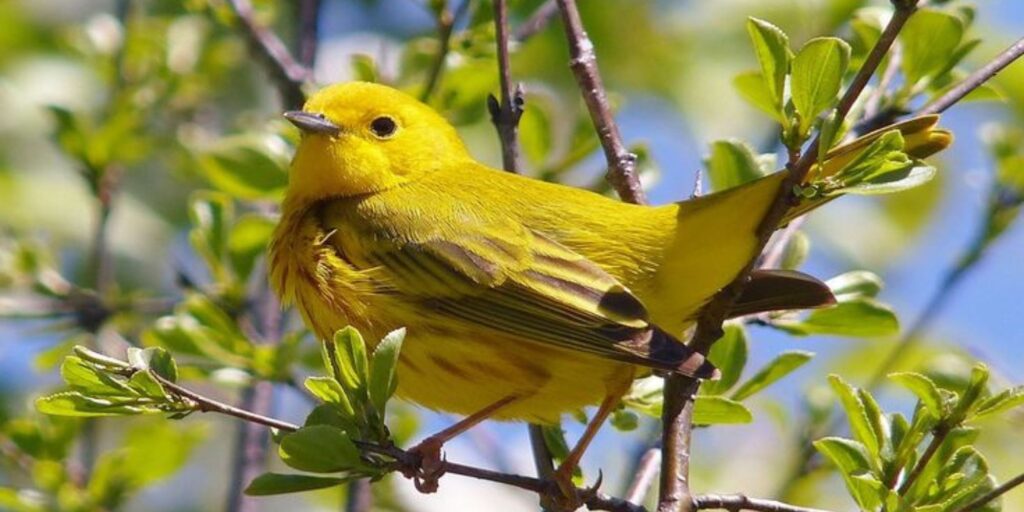
The Yellow Warbler is a small and vibrant songbird that captures attention with its striking yellow plumage. These birds spread across North America during the summer months, breeding in diverse habitats like forests, wetlands, and gardens. Yellow Warblers prefer feeding on insects, which they catch while flitting through tree branches and foliage. Their agility allows them to dart quickly between perches as they search for their next meal. The bright yellow feathers of these birds make them easy to spot in their natural environments, especially when they sing their sweet, melodic tunes.
During migration, Yellow Warblers gather in flocks and travel long distances, heading toward Central America for the winter. Their vibrant songs become a characteristic feature of their spring and summer presence, and they often nest in dense shrubs or trees, where they conceal their nests from predators. Birdwatchers enjoy the company of these cheerful songbirds, as they provide a colorful and auditory delight. The Yellow Warbler’s migration habits, combined with its distinctive appearance and song, make it a favorite among those interested in North America’s birdlife. The Yellow Warbler’s vibrant presence enriches the beauty and complexity of the ecosystems it inhabits.
Z – Zebra Dove

The Zebra Dove is a small, ground-dwelling bird native to Southeast Asia. Its most distinguishing feature is the zebra-like striping on its neck, which gives the bird its name. These doves maintain a calm temperament and often appear in pairs or small flocks. Zebra Doves coo softly, further highlighting their gentle nature. Unlike many other bird species, these doves prefer staying close to the ground to forage for food. They feed primarily on seeds, fruits, and grains, which they find in parks, gardens, and agricultural fields.
Zebra Doves have adapted well to urban environments, often appearing in cities and towns throughout their native range. Their ability to thrive in various habitats, from busy urban areas to rural settings, demonstrates their resilience and adaptability. These birds typically build their nests in sheltered spots, such as on tree branches or other structures. Their peaceful presence and subtle beauty make Zebra Doves a favorite among bird enthusiasts and casual observers alike. With their calm demeanor and widespread distribution, Zebra Doves play an essential role in their ecosystems and remind us of nature’s ability to adapt to human-influenced environments.
All Types of Birds (A to Z): Conclusion
Birds showcase an incredibly diverse and captivating range of species, each with its unique behaviors, adaptations, and appearances. From the majestic Albatross soaring across vast oceans to the vibrant Zebra Dove perched in urban gardens, birds occupy a wide array of ecological niches. These creatures exhibit remarkable adaptations that allow them to thrive in nearly every environment, whether they are gliding effortlessly through the sky, diving into the depths of the ocean, or foraging on the ground. Birds have evolved to fill essential roles in ecosystems worldwide, from pollinating plants to controlling insect populations. Their presence ensures that ecosystems remain balanced and healthy, supporting the diversity of life that shares their habitats.
This A to Z list offers only a small glimpse into the vast avian diversity found across the globe. Each bird species contributes to the intricate web of life, showcasing the remarkable ways in which nature adapts and thrives. By exploring the world of birds, we not only deepen our understanding of the natural world but also recognize the critical importance of protecting these extraordinary creatures and their habitats. Preserving birds and their environments ensures the continued health of ecosystems, which in turn supports the planet’s biodiversity. Whether through their songs, flights, or behaviors, birds remind us of the beauty and complexity of life on Earth.

